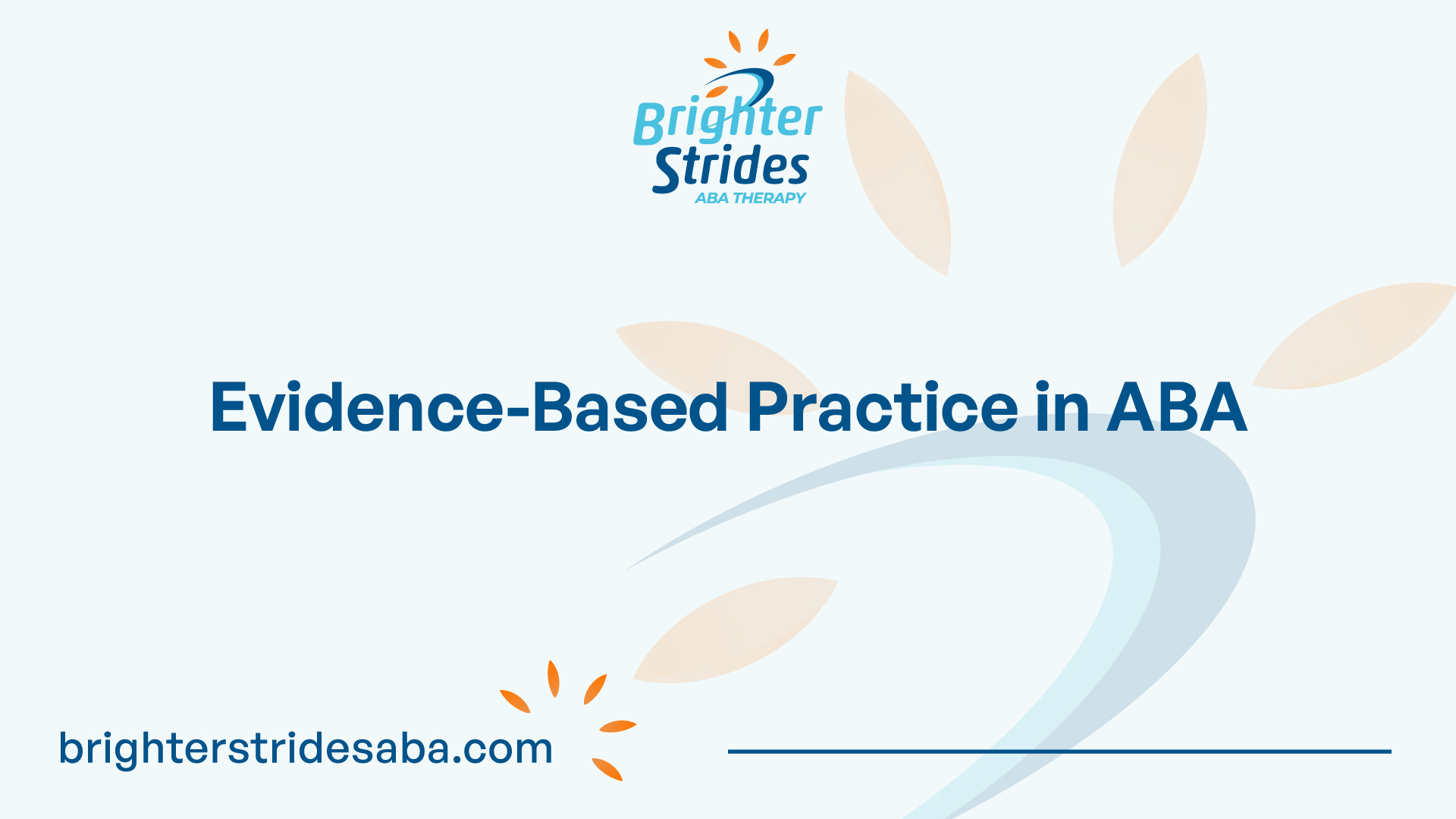
Understanding ABA Intervention Strategies
ABA therapy, or Applied Behavior Analysis Therapy, is a highly effective treatment approach widely used to support individuals with various behavioral challenges, including autism spectrum disorder (ASD), attention deficit hyperactivity disorder (ADHD), and other developmental disabilities. The primary objective of ABA therapy is to improve socially significant behaviors and enhance the overall quality of life for individuals undergoing treatment.
Basics of ABA Therapy
ABA therapy focuses on enhancing behavior using principles from the science of behavior. It aims to make socially significant changes, transforming challenging behaviors over time into more functional and appropriate behaviors [2]. The therapy is based on the understanding that behavior is influenced by environmental factors, and by modifying these factors, positive changes can be achieved.
ABA therapy utilizes evidence-based techniques to teach and reinforce desired behaviors while reducing problematic behaviors. It involves breaking down complex skills into smaller, manageable steps, and using systematic instruction and reinforcement to teach these skills effectively. The therapy is highly individualized, with interventions tailored to the specific needs of each individual.
Importance of Early ABA Intervention
Starting ABA therapy as early as possible is crucial for the best results. Research has shown that beginning ABA therapy before the age of four can significantly enhance children’s development, improving social and communication skills, and making it easier for them to interact with other children [2]. Early intervention allows for the targeted teaching of skills during critical periods of development, maximizing the potential for positive outcomes.
More than 20 studies have established that intensive and long-term therapy using ABA principles improves outcomes for many children with autism. These studies demonstrate gains in intellectual functioning, language development, daily living skills, and social functioning. ABA therapy is considered an evidence-based best practice treatment by the US Surgeon General and the American Psychological Association, passing scientific tests of its usefulness, quality, and effectiveness.
By implementing ABA intervention strategies early on, individuals can receive the necessary support and guidance to develop essential skills, promote positive behavior, and enhance their overall well-being. The effectiveness of ABA therapy, combined with early intervention, offers a promising path towards improved outcomes for individuals with behavioral challenges.
In the next sections, we will explore the key players in ABA therapy, the core techniques used, and the importance of setting personalized goals and measuring outcomes in ABA therapy. Stay tuned to uncover more about this impactful intervention approach.
Key Players in ABA Therapy
When it comes to ABA therapy, several key players contribute to its success. These include BCBA therapists and ABA therapists who work together to implement effective intervention strategies.
Role of BCBA Therapists
A BCBA therapist, or Board Certified Behavior Analyst, is a trained professional specializing in behavior analysis. They play a crucial role in designing and overseeing ABA programs tailored to each individual’s skills, needs, interests, preferences, and family situation [3]. BCBA therapists have an in-depth understanding of behavioral principles and techniques, which allows them to assess, analyze, and provide interventions for individuals with behavioral challenges.
BCBA therapists utilize their expertise to conduct comprehensive assessments, develop individualized treatment plans, and monitor progress throughout the course of therapy. They collaborate with other professionals, such as speech therapists and occupational therapists, to ensure a holistic approach to treatment. BCBA therapists also provide guidance and support to ABA therapists, ensuring the effective implementation of intervention strategies.
ABA Therapist Responsibilities
ABA therapists, also known as behavior technicians or behavior therapists, work under the supervision of BCBA therapists. They play a hands-on role in delivering ABA therapy to individuals. ABA therapists are responsible for implementing the intervention strategies outlined in the individualized treatment plans developed by BCBA therapists.
The responsibilities of ABA therapists may include:
- Conducting one-on-one therapy sessions with clients
- Implementing behavior intervention strategies, such as discrete trial training (DTT) and antecedent-based interventions (ABI)
- Collecting and recording data on client behavior and progress
- Assisting in the development of new skills, such as communication, socialization, and adaptive skills
- Collaborating with parents, caregivers, and other professionals to ensure consistency and generalization of skills across different environments
- Providing feedback and support to families, promoting their active involvement in the therapy process
- Adhering to ethical guidelines and maintaining confidentiality in all aspects of therapy
ABA therapists work closely with individuals undergoing ABA therapy, providing guidance, support, and reinforcement throughout the sessions. Their dedication and commitment contribute significantly to the progress and success of the therapy.
By understanding the roles and responsibilities of BCBA therapists and ABA therapists, individuals and their families can have a clearer picture of the collaborative efforts involved in implementing effective ABA intervention strategies. These professionals work together to ensure that ABA therapy is tailored to the unique needs of each individual, promoting positive behavior changes and enhancing overall quality of life.

Core Techniques in ABA
Applied Behavior Analysis (ABA) therapy utilizes various techniques to promote positive behavior change and skill development. In this section, we will explore three core techniques commonly used in ABA therapy: Discrete Trial Training (DTT), Antecedent-based Interventions (ABI), and Extinction Strategies.
Discrete Trial Training (DTT)
Discrete Trial Training (DTT) is a fundamental teaching strategy used in ABA therapy. It involves breaking down complex skills or behaviors into smaller, discrete elements. Each element is taught in a structured and controlled environment, allowing for focused learning and repeated practice. Positive reinforcement is provided after each correct response to the discrete element being taught.
DTT is particularly effective for individuals with autism spectrum disorder (ASD) and other developmental disabilities. By breaking down skills into manageable components, DTT helps individuals learn and generalize new skills more effectively. For example, teaching colors one at a time until mastery is achieved before moving on to the next color [4].
Antecedent-based Interventions (ABI)
Antecedent-based Interventions (ABI) are strategies used in ABA therapy that focus on modifying the environment to reduce the likelihood that something in the environment could trigger interfering behavior. ABI strategies often involve making changes to the antecedents or events that occur before the behavior of interest.
One common ABI strategy is offering choices to children to reduce defiant behavior. By providing individuals with options, they feel a sense of control and are more likely to comply with requests or instructions. This strategy empowers individuals and helps to prevent challenging behaviors from occurring [5].
Extinction Strategies
Extinction is a therapeutic technique used in ABA therapy to reduce or eliminate problem behaviors by pairing the behavior with a lack of reinforcement. It is based on the principle that when a behavior is no longer reinforced, its frequency decreases over time. Extinction is used for problem behaviors that are maintained by reinforcement.
Different strategies are developed to reduce problem behaviors based on how they are being maintained. For example, if a behavior is reinforced by attention, ignoring the behavior when it occurs can help to extinguish it. Extinction should be applied carefully under professional guidance to avoid frustration and counterproductivity. It is important to note that extinction should only be implemented by trained professionals to ensure its effectiveness and minimize any potential negative side effects [6].
Understanding and implementing these core techniques in ABA therapy can greatly contribute to the success of interventions. By utilizing Discrete Trial Training (DTT), Antecedent-based Interventions (ABI), and Extinction Strategies appropriately, behavior analysts and therapists can help individuals achieve positive behavior change and reach their full potential.
Personalized ABA Therapy Goals
In ABA therapy, personalized goals are the cornerstone of intervention strategies. These goals are tailored to the unique needs of each individual, focusing on various areas of development, including behavior modification, communication, and social skills. By setting clear and meaningful goals, ABA therapy aims to promote growth and independence in individuals with Autism Spectrum Disorder (ASD) and other developmental challenges.
Goal Setting in ABA Therapy
Goal setting plays a fundamental role in ABA therapy, providing a clear direction and purpose for the treatment process. Collaborating with individuals on the autism spectrum and their families, ABA therapists work together to identify target areas for intervention and establish specific, measurable, achievable, relevant, and time-bound (SMART) goals. These goals serve as a roadmap for therapy, guiding interventions and tracking progress over time.
Setting goals in ABA therapy ensures that interventions are targeted and individualized, taking into consideration the unique needs and circumstances of each person. Whether the goal is to improve communication skills, enhance social interactions, or develop adaptive behaviors, the focus is on creating positive, meaningful changes that enhance the individual’s quality of life.
Measuring ABA Therapy Outcomes
Measuring outcomes is a critical component of ABA therapy goals, providing tangible evidence of progress and helping therapists assess whether interventions are producing the desired results. Measurable outcomes serve as a powerful tool for data collection, analysis, and collaboration, ensuring that therapy stays focused on the individual’s specific needs.
Through ongoing assessment and progress monitoring, ABA therapists collect data to evaluate the effectiveness of interventions and make necessary adjustments to the treatment plan. Measuring outcomes not only provides quantifiable evidence of progress but also informs decision-making and guides the selection of appropriate intervention strategies.
By regularly measuring and analyzing outcomes, ABA therapy maximizes its impact and ensures that therapy remains tailored to the unique needs of each individual. This data-driven approach promotes accountability, informs treatment modifications, and helps individuals and their families stay engaged in the therapy process.
In conclusion, personalized ABA therapy goals are at the core of effective intervention strategies. By setting goals collaboratively, ABA therapists provide a clear direction for therapy, while measuring outcomes allows for ongoing assessment and progress monitoring. Through individualized treatment plans and consistent data collection, ABA therapy aims to promote growth, independence, and a better quality of life for individuals with autism spectrum disorder and other developmental challenges.
ABA Therapy Techniques
When it comes to ABA therapy, a range of techniques is employed to address various behaviors and promote positive outcomes. In this section, we will explore three key ABA therapy techniques: behavior contracts, modeling and redirection, and individualized reinforcement strategies.
Behavior Contracts
Behavior contracts are a formal approach to behavior modification in ABA therapy. They outline expected behaviors, associated rewards or consequences, and incorporate principles of positive reinforcement. These contracts are particularly effective in addressing disruptive behaviors and behavioral disorders. By clearly defining expectations and linking them to specific consequences or rewards, behavior contracts provide individuals with a structured framework for behavior change.
Behavior contracts are often utilized for individuals who require a more structured approach to behavior modification. They can be tailored to address specific behaviors and set realistic goals. The contract serves as a visual reminder of the agreed-upon behaviors and the potential outcomes, allowing individuals to track their progress and make informed choices.
Modeling and Redirection
Modeling is a versatile teaching technique widely used in ABA therapy. It involves demonstrating desired behaviors to individuals, particularly effective for helping autistic children learn new skills or adopt desirable behaviors. Modeling provides a visual and experiential form of learning, enhancing imitation skills by providing concrete examples to imitate. By observing and imitating appropriate behaviors, individuals can acquire new skills and develop socially acceptable behaviors.
Redirection is another important technique used in ABA therapy. It involves steering an individual’s focus away from undesirable behavior towards a positive alternative. Redirection is especially useful when working with autistic children engaging in disruptive behaviors. By promptly intervening and redirecting their attention to a more appropriate activity or behavior, therapists can help individuals shift their focus and prevent further escalation of challenging behaviors.
Individualized Reinforcement Strategies
ABA therapy recognizes the importance of individualizing reinforcement strategies to maximize the effectiveness of behavior modification. These strategies focus on identifying highly personalized reinforcers that resonate with the individual. Reinforcers can include preferred toys, specific activities, social praise, or other rewards that hold value for the individual.
By tailoring reinforcement strategies to the individual’s preferences and interests, therapists can enhance motivation and engagement in the therapy process. The use of individualized reinforcement strategies helps create a positive and supportive environment, increasing the likelihood of desired behaviors being repeated.
It is important to note that ABA therapy requires a flexible and adaptive approach to intervention strategies. Not all techniques will work equally well for every individual. Therapists continuously adjust interventions based on the individual’s responses and evolving needs to ensure effectiveness over time. By utilizing a combination of techniques and personalizing strategies, ABA therapists strive to promote positive behavior change and improve the quality of life for individuals receiving therapy.
In the next section, we will delve into the concept of evidence-based practice in ABA therapy, which forms the foundation for effective intervention strategies.

Evidence-Based Practice in ABA
In the field of applied behavior analysis (ABA), evidence-based practice (EBP) plays a crucial role in guiding intervention strategies and ensuring successful outcomes. EBP in ABA involves integrating the best available evidence, clinical expertise, and client values and context to inform decision-making and treatment planning.
Foundation of Evidence-Based ABA
The foundation of evidence-based ABA lies in the recognition that effective interventions should be based on sound empirical evidence. Almost 45 years ago, Baer et al. (1968) introduced ABA as a discipline focused on solving socially important problems in various settings. Since then, ABA has made significant contributions to fields such as education, developmental disabilities, autism, clinical psychology, behavioral medicine, and organizational behavior management.
To ensure that interventions are evidence-based, it is essential to rely on research literature that supports the effectiveness of specific ABA strategies and techniques. This evidence may come from controlled experiments, single-subject designs, systematic reviews, and meta-analyses. The integration of research evidence allows practitioners to implement interventions that have been proven to be effective.
Clinical Expertise in ABA Practice
In addition to research evidence, clinical expertise is a vital component of evidence-based ABA practice. Clinical expertise refers to the knowledge and skills possessed by ABA practitioners that enable them to effectively apply the principles of ABA in real-world settings. It encompasses a wide range of factors, including knowledge of the research literature, conceptual understanding of ABA, clinical and interpersonal skills, and the ability to integrate client values and context.
Practitioners with clinical expertise in ABA understand the importance of ongoing professional development and staying up to date with the latest research findings. They recognize the need for data-based decision-making and may seek outside consultation when necessary to ensure the best outcomes for their clients. By continuously refining their clinical expertise, ABA practitioners can provide high-quality services that are tailored to the unique needs of each individual.
The adoption of evidence-based practice frameworks, including the incorporation of research evidence and clinical expertise, is essential for maintaining high standards of care and improving outcomes in ABA. Recognizing the importance of evidence-based practice, the federal department of education has aligned itself with the EBP movement, encouraging the use of evidence in decision-making and funding allocation [7].
By integrating research evidence and clinical expertise, ABA practitioners can ensure that their interventions are grounded in the best available evidence and tailored to the specific needs of their clients. This approach enhances the effectiveness of ABA therapy and maximizes the potential for positive outcomes.
For more information on ABA therapy techniques and implementation tips, refer to our articles on ABA therapy models, ABA data collection methods, and ABA implementation tips.

 We've just released an article!
Check out our blog!
We've just released an article!
Check out our blog!



